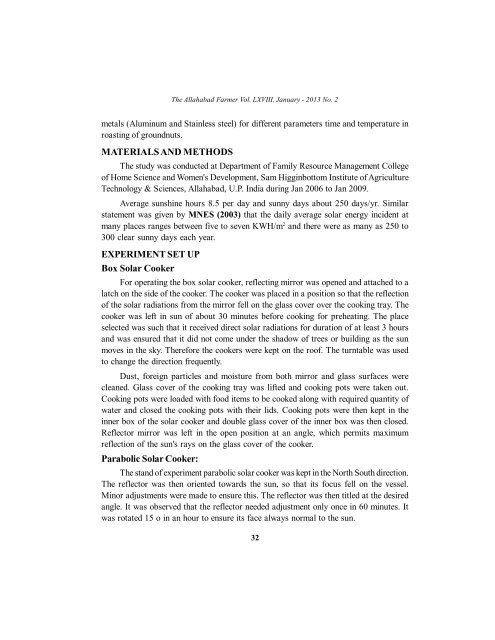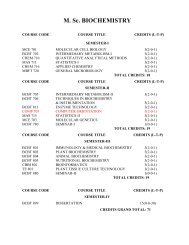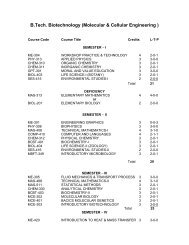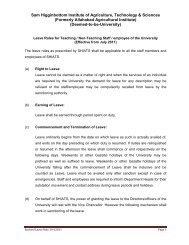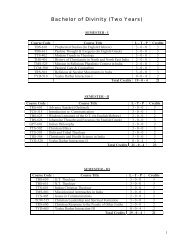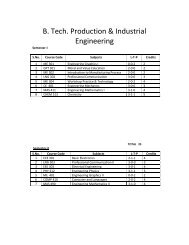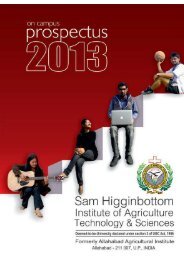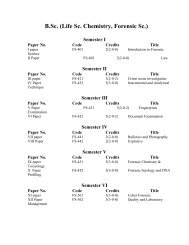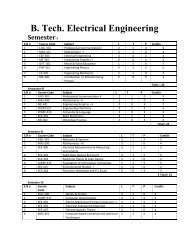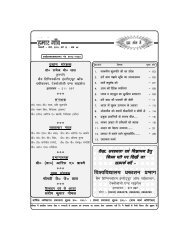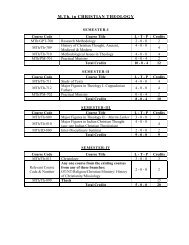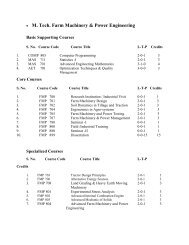Study of Hygienic practices of street food vendors in ... - Shiats.edu.in
Study of Hygienic practices of street food vendors in ... - Shiats.edu.in
Study of Hygienic practices of street food vendors in ... - Shiats.edu.in
You also want an ePaper? Increase the reach of your titles
YUMPU automatically turns print PDFs into web optimized ePapers that Google loves.
The Allahabad Farmer Vol. LXVIII, January - 2013 No. 2metals (Alum<strong>in</strong>um and Sta<strong>in</strong>less steel) for different parameters time and temperature <strong>in</strong>roast<strong>in</strong>g <strong>of</strong> groundnuts.MATERIALS AND METHODSThe study was conducted at Department <strong>of</strong> Family Resource Management College<strong>of</strong> Home Science and Women's Development, Sam Higg<strong>in</strong>bottom Institute <strong>of</strong> AgricultureTechnology & Sciences, Allahabad, U.P. India dur<strong>in</strong>g Jan 2006 to Jan 2009.Average sunsh<strong>in</strong>e hours 8.5 per day and sunny days about 250 days/yr. Similarstatement was given by MNES (2003) that the daily average solar energy <strong>in</strong>cident atmany places ranges between five to seven KWH/m 2 and there were as many as 250 to300 clear sunny days each year.EXPERIMENT SET UPBox Solar CookerFor operat<strong>in</strong>g the box solar cooker, reflect<strong>in</strong>g mirror was opened and attached to alatch on the side <strong>of</strong> the cooker. The cooker was placed <strong>in</strong> a position so that the reflection<strong>of</strong> the solar radiations from the mirror fell on the glass cover over the cook<strong>in</strong>g tray. Thecooker was left <strong>in</strong> sun <strong>of</strong> about 30 m<strong>in</strong>utes before cook<strong>in</strong>g for preheat<strong>in</strong>g. The placeselected was such that it received direct solar radiations for duration <strong>of</strong> at least 3 hoursand was ensured that it did not come under the shadow <strong>of</strong> trees or build<strong>in</strong>g as the sunmoves <strong>in</strong> the sky. Therefore the cookers were kept on the ro<strong>of</strong>. The turntable was usedto change the direction frequently.Dust, foreign particles and moisture from both mirror and glass surfaces werecleaned. Glass cover <strong>of</strong> the cook<strong>in</strong>g tray was lifted and cook<strong>in</strong>g pots were taken out.Cook<strong>in</strong>g pots were loaded with <strong>food</strong> items to be cooked along with required quantity <strong>of</strong>water and closed the cook<strong>in</strong>g pots with their lids. Cook<strong>in</strong>g pots were then kept <strong>in</strong> the<strong>in</strong>ner box <strong>of</strong> the solar cooker and double glass cover <strong>of</strong> the <strong>in</strong>ner box was then closed.Reflector mirror was left <strong>in</strong> the open position at an angle, which permits maximumreflection <strong>of</strong> the sun's rays on the glass cover <strong>of</strong> the cooker.Parabolic Solar Cooker:The stand <strong>of</strong> experiment parabolic solar cooker was kept <strong>in</strong> the North South direction.The reflector was then oriented towards the sun, so that its focus fell on the vessel.M<strong>in</strong>or adjustments were made to ensure this. The reflector was then titled at the desiredangle. It was observed that the reflector needed adjustment only once <strong>in</strong> 60 m<strong>in</strong>utes. Itwas rotated 15 o <strong>in</strong> an hour to ensure its face always normal to the sun.32


